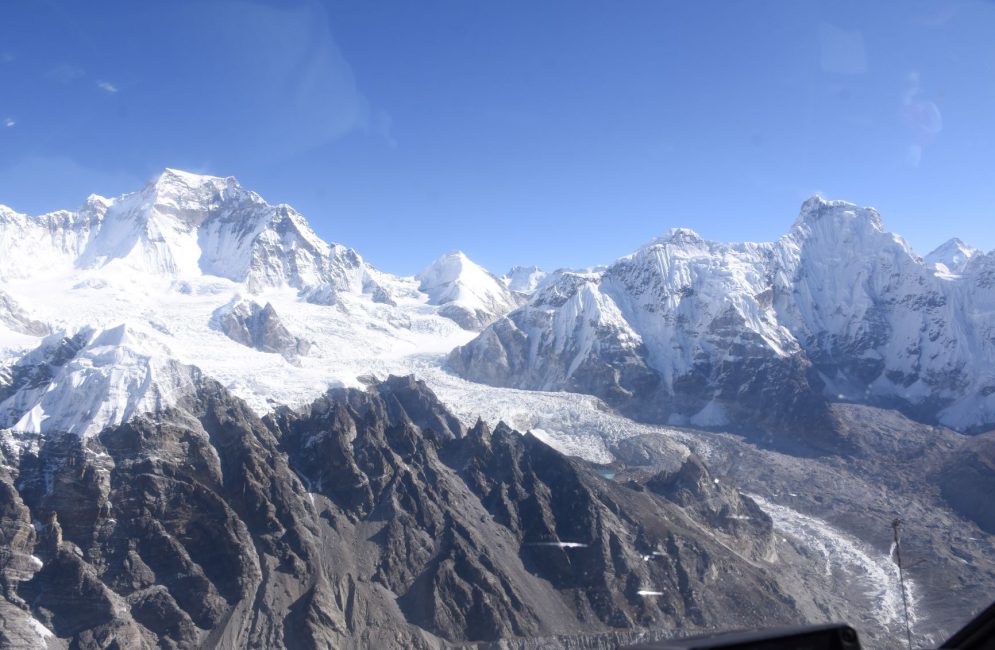
How hard is Everest Base Camp Trek
Everest Base Camp is a legendary trekking trail without any doubt. This is not climbing, for climbing, you need to have a lot of courage, will power, and of course a strong bank balance as compared to the base camp trekking. More than 10,000 people per year visit the base camp of Everest and its surrounding. Travelers can even modify their route to reach out to the Gokyo Lake, Chola pass, and other beautiful destinations in the Everest region. It’s always been asked how hard is Everest Base Camp Trek through many ways to the travel industry of Nepal.
It’s always being told that trekking in the high Himalayas is quite difficult without proper management of necessary thing and so does the Everest base camp trekking. People who have been trekking, hiking, and walking in the hillside for more than a year or already been in the Himalayan region might find this trek relatively easy. Someone, who is fascinating about trekking, but never went out for any kind of physical activity might feel some difficulties throughout the trekking in the Khumbu Valley.
There are plenty of factors on the basis of which the difficulty level of Everest Base camp can be determined for the trekkers. To know the factors that really show how the trek looks like let’s dig into this list.
How tough Everest Base Camp Trek is Geography of the Route to Kala Patthar
To go for the Everest base camp trek, you need to take a thrilling flight to Lukla from the capital Kathmandu, which would take up to 30 minutes. Lukla Flight itself is quite difficult as the tensing Hillary airport is listed on the top dangerous airport in the world, so some people might find it a little bit difficult. To avoid these difficulties in flight, one can choose the classical route to reach Lukla through Jiri.
The Kalapathar and the Everest region is situated in the eastern Himalayan region of Nepal. The ascending way to reach the base camp from Lukla might make you tired At this level of height everyone finds it difficult to walk even in a straight path, then think you need to climb uphill to 5316m. The rocky terrains in the mountain on the path is harder to pass, yet most satisfying to see and experience.
At such high altitude, you might hit up to snowfall during the winter, and even in other seasons if the day is quite colder than the normal days. You need to fix your shoes tightly in the snow not to steep and make you safe during walking.
Best Season for Everest Base Camp trek
Season, when you are going to trek to the Everest base camp plays a vital role in the difficulty level of this popular trekking in Nepal. There will be continuous snowfall during the winter season, end of autumn, and starting of the spring. Walking on the snowy path is way more difficult than you think it is.
If the one going for the trek thinks he/she can walk on this type of path in normal shoes, they are wrong. Trekkers need to have specific trekking boots with a grip attached in it to walk easily on the snowy path of the Everest region. Walking on warm clothes might make you sweaty which might irritate you during hiking.
The rainy season, on the other hand, makes the path much steeper than it is on the other season. You need to have a grip on your trekking boots in this season also. Walking with an umbrella or raincoat on during raining is quite irritating for people who are not used to this kind of adventure in the high Himalayas.
The road condition is bad and even flight might be delayed due to fogs and status of the runways in the Lukla Airport. If you are making a plan to reach the base camp of the world’s tallest mountain, I recommend you to
avoid this season and book on the autumn and Spring Season that is October November and April-June.
Weather
Well, even if you book the trek in favorable seasons, there is plenty of chances that you are going to strike in some bad weather. No one and No machine can determine how the weather is going to be in the next day in the mountain area. The weather keeps changing every hour, sometimes it’s windy, some time and it’s clear, sometimes the place covered by fogs and snowfall at some point as well. Its recommended by the White Hill Adventure that please go through the detailed weather condition by
trusted authorities before going to trek. Bad weather even for a single day can make your Everest base camp trek hard.
Distance to Cover in a single day
The total distance covered in the Everest base camp trek is about 130 kilometers. This means that you are going to walk for 65 km roughly during the ascending and 65 km during the descending. For 65 km you need to split it to 6-7 days including the acclimatization for 1 or 2 days. Trekkers need to walk almost 12-15 km in a single day and 4-5 kilometers in an hour.
If the calculation made above is done perfectly, you will have enough time to rest during the trek, and between the days also. Giving time for Breakfast, lunch, and dinner, you will have more time for the trekking and rest during the trek. Someone with a little bit of experience of walking in the higher region can easily complete this trek in 12 days even if you are inexperienced walking in the Himalayas, don’t worry you can complete this easily in 14-15 days.
If you want to visit some other destination around the Kala Patthar, you need to walk more kilometers as expected and need more days to complete the trip.
Training before the trekking
A perfect training before the trip makes it easier than expected. Even Normal daily workout will help you in making a strong foundation for the trek. Jugging, push-ups, set-ups are recommended to travelers to do
it on a daily basis. Healthy behaviors also make your body strong enough to resist from altitude sickness.
The amount of hard work you do before the trek determines the difficulties of this trek. A moderate amount of fitness level and mild exercise can help you in completing the trip easily. Normal daily training helps you in gaining a strong fitness level and mental strength as well. You can engage yourself in different activities like, swimming, running, cycling, jogging, and walking to build a perfect physical condition of your body.
Altitude Sickness
Any form of walking above 3000m might bring about the possibility of altitude sickness. For the Everest base camp trek, you need to go up to 5500m approximately, which increases the possibility of you being caught by altitude sickness. This is also another difficulty that you need to overcome to reach on the base camp of Everest.
The altitude sickness is categorized into different types based on the condition of the patient. Acute Mountain Sickness (AMC) High altitude Cerebral Edema (HACE), and High Altitude Pulmonary Edema (HAPE) are the type of different types of sickness caused by the high altitude. AMC is a mild condition and the first stage of the sickness, normal treatment with normal medicine will cure this easily in the Himalayas. One needs to bring all the necessary medicine to cure normal altitude sickness in the mountain region of Nepal. The remaining two are a critical condition and only a few people will hit up to this. To treatment these two, rescue by helicopter is necessary.
Guide & Porters
Bringing guide and porters to the trekking is the must thing to make your trip easier. Ignoring the guide and porter might cause you to lose track of the trekking trails. Guide not only help you in finding the trails but also help in difficult condition and give you a brief introduction and information of the place.
The guide also gives you some ideas about which way is tricky and you need to handle it with care. Without a guide, the treatment of altitude sickness is even harder than expected. Help in some regular conditions is possible with the guide and porter with you.
Carrying all your backpacks for almost two weeks will make you tired and exhausted. Walking on the high Himalayas, where getting ill and feeling difficult is normal with all your belongings is quite hectic. To help you in carrying the belonging and other necessary things porter will help you in these. Don’t think about the expense of a single porter, but also think about yourself and your health.
How to ignore the hardness of the Everest Kalapathar Trekking
- Have information about the weather condition in the Everest Region before Going
- Make appropriate hotel booking or tell the travel agency to arrange accommodation for you during the Everest base camp trek.
- Get travel insurance that also covers critical health conditions even death.
- Don’t hesitate to drink more water during the trekking.
- Some junk food, and other energy drink is recommended to bring to the trekking
- Avoid Alcohol, and smoking.
- Get rest during the trek and save energy for the next day, next hour, and next minutes
- Don’t skip acclimatization day, as it preserves energy and adjusts your body in the high Himalayas to fight with altitude sickness as well.






